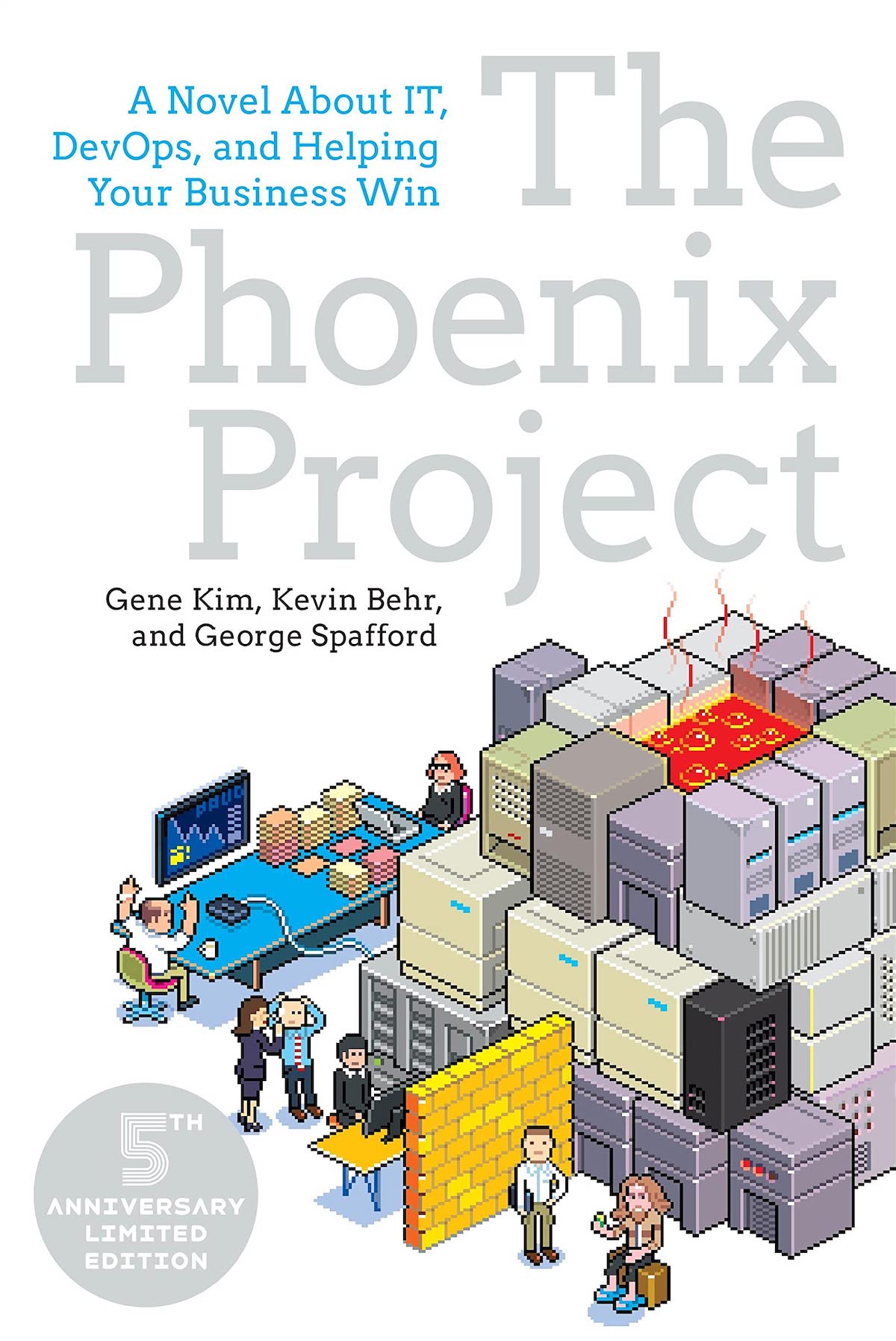11 Dec 2025
Octopath Traveler 0 came out a week ago and I’ve been hooked on the game. Similar to how the second entry in the series improved on the first entry, the third entry is yet another step-function improvement in an already solid series. If you enjoyed the previous entries or are looking for an old-school, HD-2D JRPG I can easily recommend this one.
Here are some quick thoughts on the game so far:
-
Increasing the party roster from 4 to 8 is great. Beyond more alignment with the “octo” theme, this has made battles much more dynamic. While you still only have four characters in the active fight at a time (split between a front and back row), having an additional four characters ready to swap in adds strategic depth. You now have to choose your full eight, and strategically pair them up. It’s a nice touch and helps brunt the impact of the next thought / complaint.
-
There are too many characters! The previous two entries had 8 main characters and that was also your playable character roster. Octopath Traveler 0 has over 30 characters! I am generally not a fan of games that have playable character counts higher than the number of battlers. I find I am not keen to experiment with new characters unless I need to or I feel like someone is not adding enough value (i.e. DPS). For example, in Expedition 33 I barely used Sciel and Monoco because they joined the party in positions #4 and #5 and the battler count was 3. Right now in Octopath Traveler 0 6 out of my 8 battlers are there because they were the first to join the team!
-
The chest and enemy-tracking mechanic is nice. As you rebuild your hometown in the game you eventually unlock a mechanic that lets you see on the world map if you are missing opening any chests or taking down any Elite Enemies. This is a nice tough and obviates the need for a notepad I was using to track all those blue chests I could not open (and had to do a ton of backtracking to open). I wish more games added simple mechanics like this to ease completionist anxiety!
-
I dislike silent protagonists. I expressed my dislike for silent protagonists back in 2017. My opinion here has not changed: “Great stories are not built by introducing a character who plays a central role and then simply having that character listen to everyone else.” Octopath Traveler 0 gives you so many vibrant characters, but the main one often feels like a hollow vessel, undermining some of the game’s more serious dramatic moments.
Thanks for reading - I’m heading back to Orsterra now and highly recommend you join me!
14 Oct 2025
There’s plenty of critical acclaim for Clair Obscur: Expedition 33 and I’m right there with everyone else. Did Expedition 33 ruin gaming? Not exactly. But it did set the bar so high that even two solid games I picked up after felt like a slog.
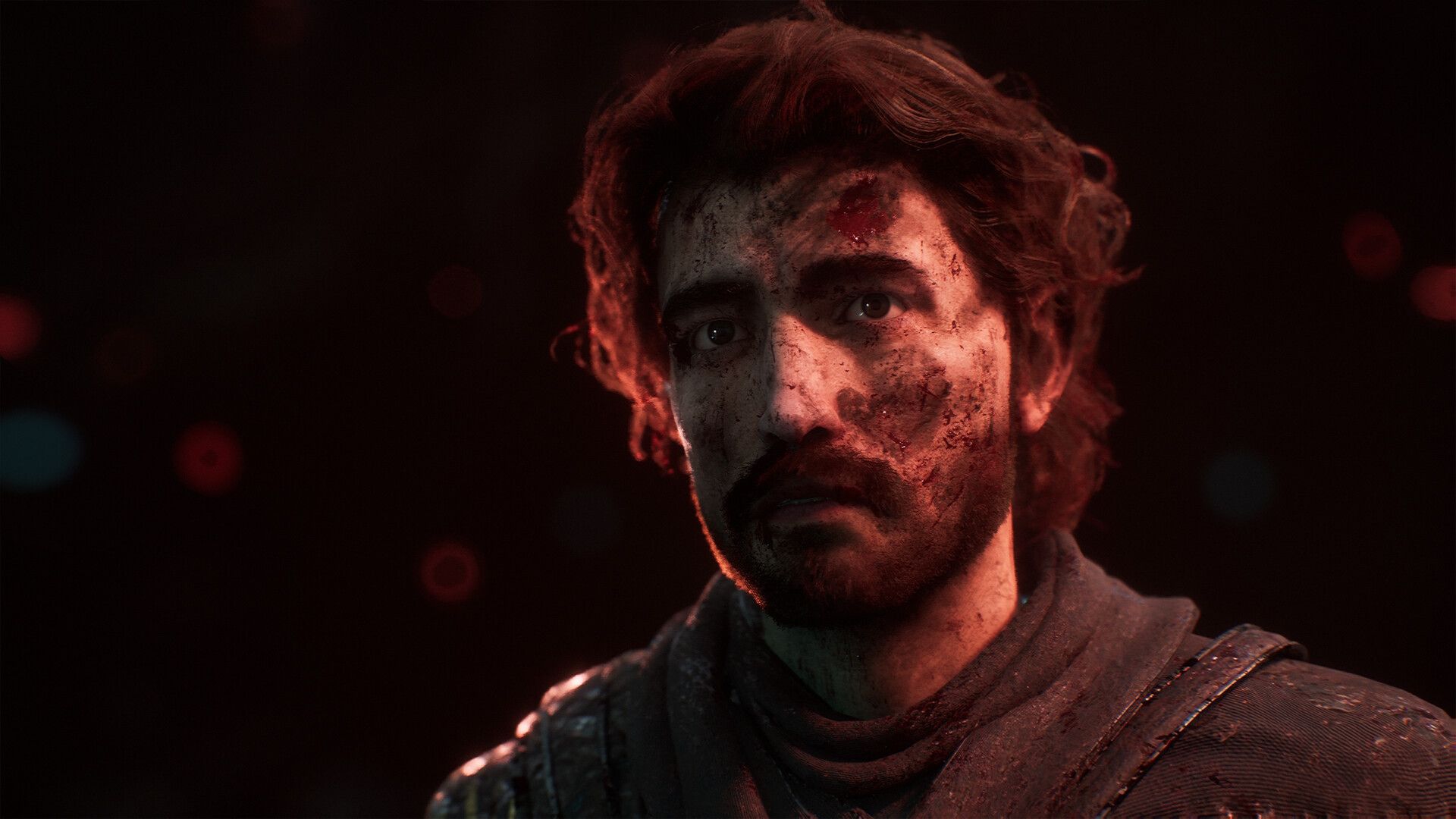
What have you done??
Since finishing Expedition 33, I played Donkey Kong Bananza and Final Fantasy Tactics: The Ivalice Chronicles on the Switch 2. Bananza is fine - good, even - but nowhere near what the internet hyped it up to be. And as a longtime Final Fantasy fan, I expected to lose myself in Tactics again (I played the War of the Lions version on the PSP many years ago), especially with the buzz around the polish and quality-of-life improvements. Instead, both felt like chores just a few hours in. Why? Simple. Expedition 33 was so damn good it ruined gaming for me.
19 Apr 2022
For every recent Nintendo Direct I would proclaim that it was finally time for both a remaster of Xenoblade Chronicles X and Xenoblade Chronicles 3 to be announced. On February 9th I finally (somewhat) stopped being wrong and we got an announcement trailer for Xenoblade Chronicles 3 with a release window of September 2022!
Today - and this is not a joke - we received another trailer which announced a firm release date of July 29th! I am floored. The amazing release date moving up news aside the meat of the trailer itself has me even more hyped to get my hands on what I hope is another strong entry in the Xenoblade series. The Interlink system which allows two characters to fuse into a robot-being looks awesome. One of the big baddies - Mr. “It’s a Wild Ride, This Passage of Fate” - has me hungry to learn dig into the story. There is also a brief peek of a mech vs. mech fight which has me hoping this new entry leans more in the mech-heavy direction of Xenoblade Chronicles X.
I cannot wait for July 29th! If you haven’t checked out the Xenoblade Chronicles series yet, grab a Nintendo Switch and you’ll be able to play Xenoblade Chronicles 1, 2, and soon 3 on it! It is a fantastic JRPG series and has been pulling new players into the genre given its rising popularity and approachability. While I am beyond excited for this new game I still cling to hope that Monolith Soft will make the Nintendo Switch the one true home for the Xenoblade series and port Xenoblade Chronicles X to it; it’s an amazing open-world game that was only released on the Wii U and would reach so many more people if it was on the Switch.
Onwards to July!
28 Feb 2022
Twenty-six years after the release of Pokémon Red, Blue, and Green on the Game Boy we have finally gotten received a noteworthy evolution to the mainline series: Pokémon Legends: Arceus. After rehashing the same formula generation after generation, they finally did it! Shifting to an open world game stressing exploration over the usual linear structure present in previous entries Arceus is the breath of fresh air I was looking for in the Pokémon series.
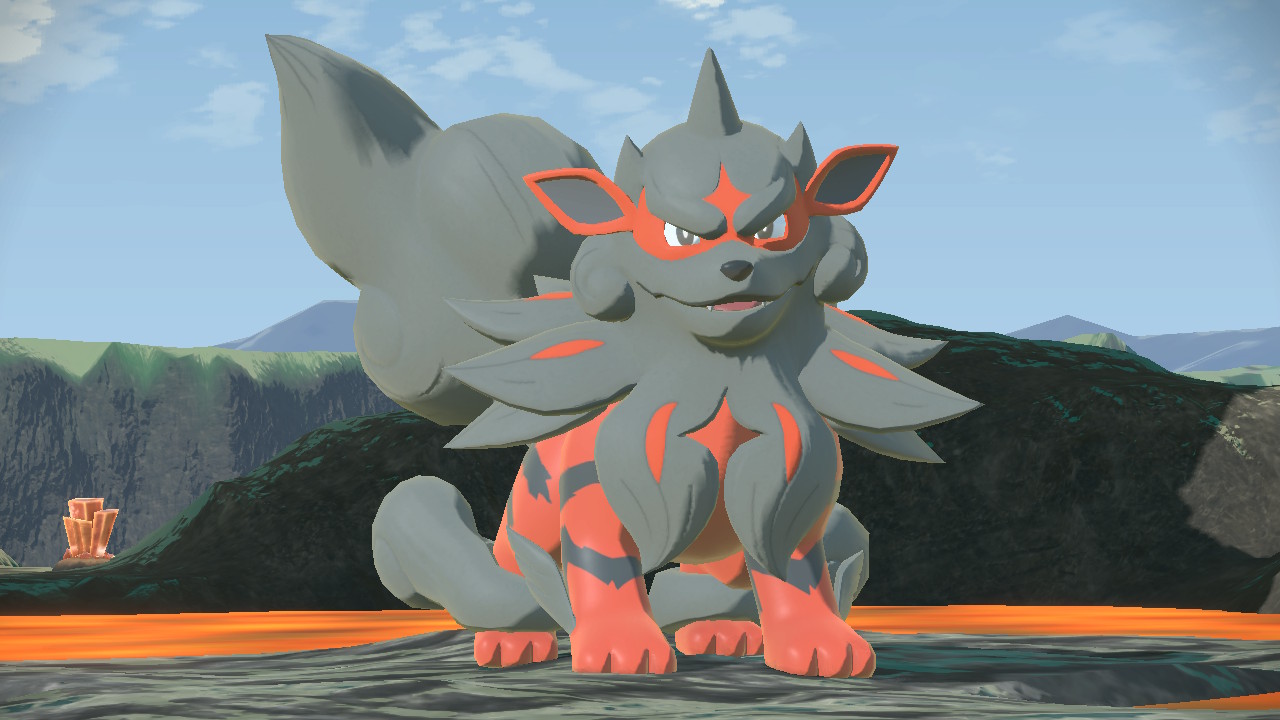
Some Pokémon, like Arcanine, get a Hisuian glow up.
I loved a lot of things this game did. Beyond enjoying the open world, like many folks do these days, one of my favorite things about this entry was it had a smaller set of Pokémon to collect and allowed you to complete your Pokédex without having to buy another version of the game or trade. The National Pokédex is great especially for “gotta catch ‘em all” masochists but I am not interested in collecting all 900+ Pokémon when I pick up a new game. By scaling down to 238 total Pokémon it made catching them all actually feasible for filthy casuals like myself.
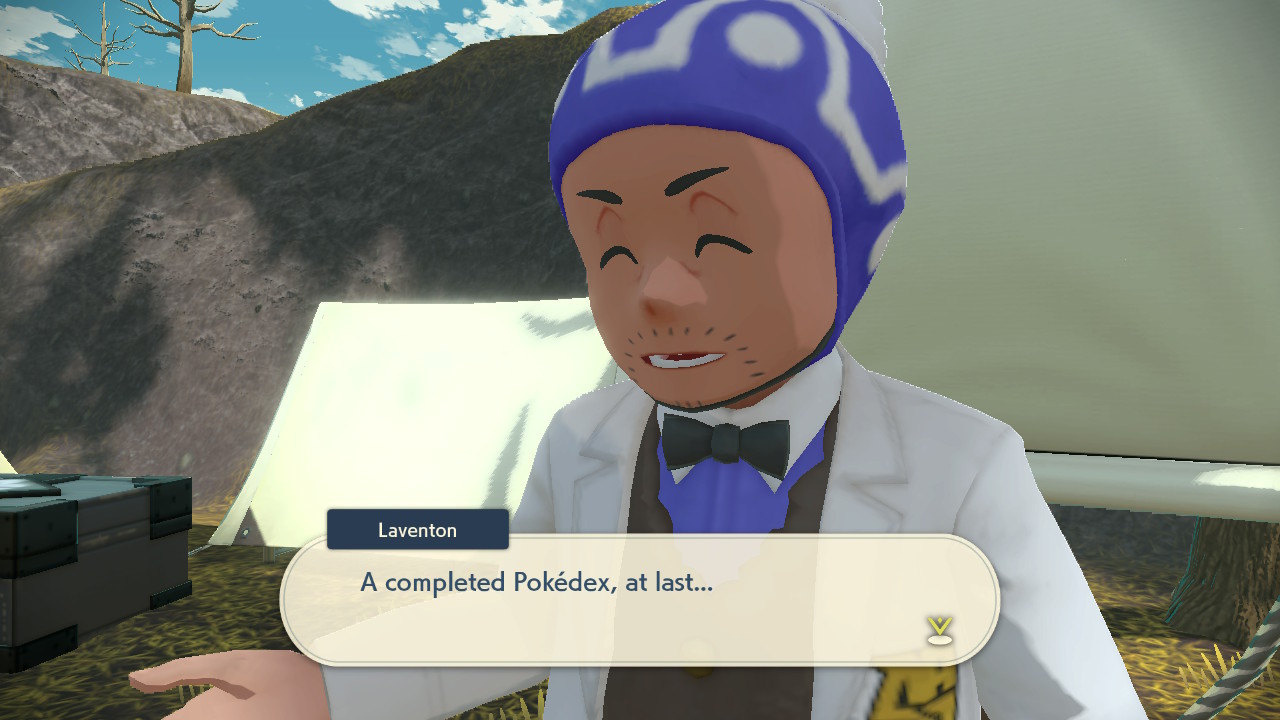
It's not a gargantuan task to complete the Pokédex in this game!
While there is a reduced number of Pokémon to catch collecting Pokémon not only involves catching them but completing specific tasks to increase the research level for each Pokédex entry. These typically look like catch Shinx 1, 2, 4, 10, 15 times; defeat Shinx 1, 2, 4, 10, 15 times; and see Shinx use Bit 1, 3, 6, 12, 25 times. Each of these tasks you complete increases your research level by one; some tasks are special and increase your research level by two. A Pokédex entry is considered completed when you reach research level 10 so for most Pokémon you don’t need to complete every single research task, just a portion of them. This mechanic encourages you to not just build up your squad of six Pokémon and plow through the game with them, but rather to use every Pokémon in your party.
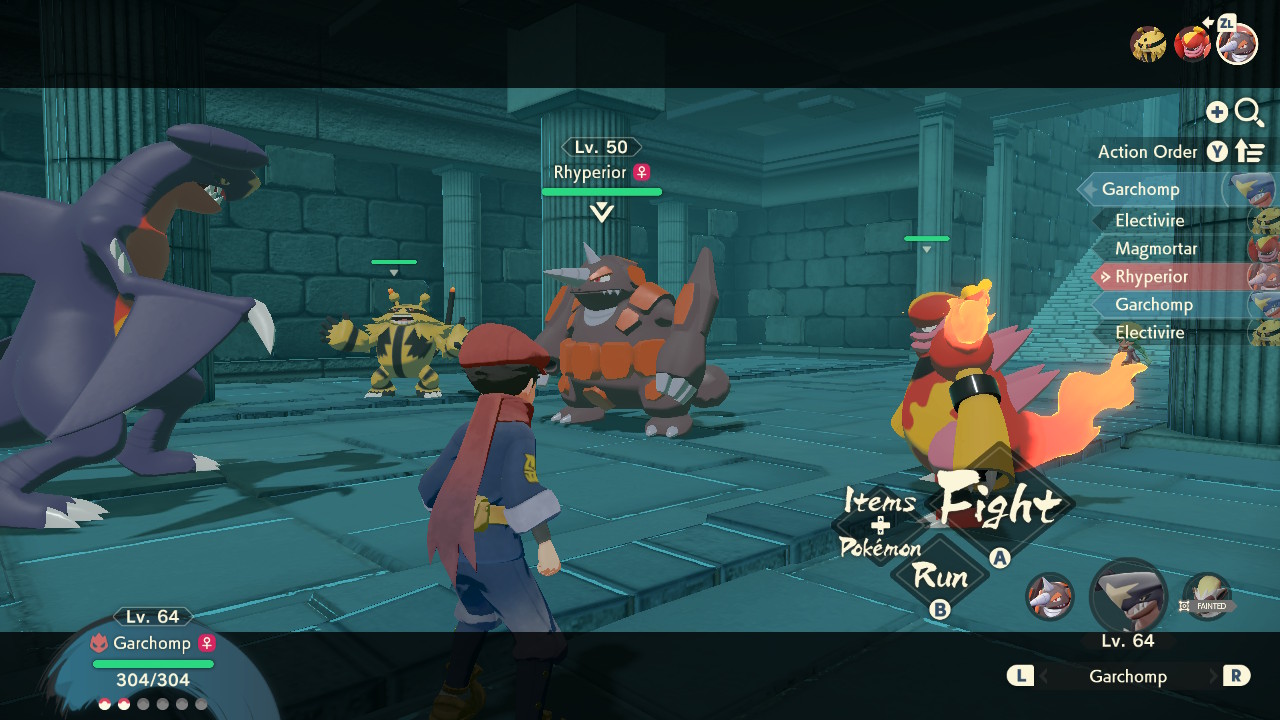
This 1v3 fight is very fair. /s
That said, there are things this game could have done to make it more enjoyable:
- For a game that strongly encourages catching multiple versions of each Pokémon managing your Pokémon at the pasture is a terrible experience. There is a rudimentary search functionality but no automatic way to sort Pokémon which would make managing everything you catch so much easier.
- In some trainer battles and frequently when battling in space-time distortions it is common to battle multiple Pokémon at a time. The problem here is you can only send out one Pokémon at a time even though previous games allowed sending out multiple Pokémon. Even if none of your opponents hard counter you, when you’re getting smacked by four opponents it means you’ll leave these battles with a majority of your party fainted or low on health.
- The ergonomics of completing research tasks could be improved. For example when viewing a wild Pokémon there is a shortcut that quickly pulls up the research card for that specific Pokémon. There is no equivalent in battles where I am interested in understanding what moves I need to use to complete research tasks. Ultimately I had to use a notepad to keep track of Pokémon in my party and what moves I need to use to complete tasks.
- While this game is open world it’s not truly open world. You have a village hub town and when you try to leave it you pick one of the five open and expansive areas and then are dropped into it. The real painpoint here is you cannot move between these five areas without first going back to the village. It would have been nice to be able to fast travel between areas without forcing a visit back to the village. Additionally most areas have only two fast travel points; it would’ve been nice to have the ability to add or have more.
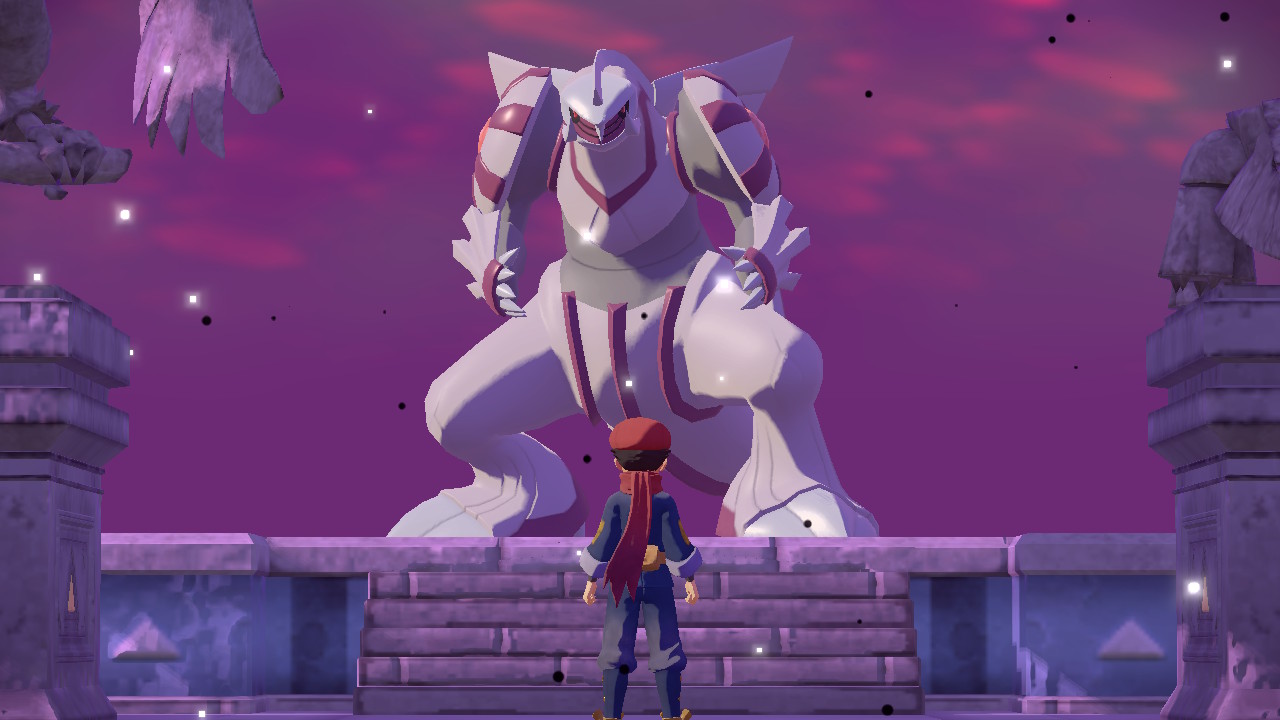
This looks like an unfair fight but you do get to use one Pokémon!
Overall, Arceus is absolutely worth checking out for anyone who is a fan of Pokémon or open world JRPG games. I really enjoyed the nearly 80 hours I put into this game and that’s not even including the content (Eternal Battle Reverie, Massive Mass Outbreaks) that was just released this week. If Game Freak can keep iterating and improving on this formula I’m very much looking forward to playing Pokémon games again!
28 Nov 2021
Manager Reads returns after a year-long plus hiatus with The Phoenix Project: A Novel about IT, DevOps, and Helping Your Business Win by Gene Kim, Kevin Behr and George Spafford.
Who recommended the book? Twitch’s Leadership Book Club selected this book in a recent poll to decide the next book we cover. It beat out Dare to Lead (a great book I reviewed in 2019) and Crucial Conversations.
Judge the book by its cover, font, page quality? The Phoenix Project’s cover has a strong retro video game style. Strong because it features some yellow blocks that Super Mario could headbutt into oblivion and a pit of lava at the center of tower of servers that reminded me of Bowser’s Castle. After reading the book you can easily identify most of the pixel art characters on the cover which is a nice touch. I’m into video games so I like this cover but it doesn’t really fit in at all with the story: Parts Unlimited sells car parts and I don’t think anyone in the story would say the stuff they’re doing is a game.
The video game creativity ends once you crack the book open. Everything here is standard and drab; even chapter headers, where some books take liberties to bring some flare, are plain and boring. The pages are thin - you can see text on the opposite side if there is blank area on the page you are looking at - but fortunately lines I highlighted for my notes did not bleed through to the other side.
Since we’re overanalyzing anyways, if you’re slightly intimated by the size of this book note that 18% of the book is the first few chapters of another book, The DevOps Handbook. This upsell is even cheesier because at the end of The Phoenix Project the protagonist, Bill, is told to write this exact book by the irrevent know-it-all mentor, Erikk. The cross-sell game here is overwhelming.
Thoughts on the book and the big take-aways? The Phoenix Project takes us through the journey of turning around an underperforming company Parts Unlimited. It takes a while but we eventually learn the Three Ways that delivers success:
- Create fast flow so work moves quickly through the entire system.
- Shorten and amplify feedback loops so quality can continue to improve at the source and avoid rework.
- Create a culture of continual experimentation and learning to reinforce the value of taking risks, learning from failure, and the need for repetition and practice to create mastery.
The crux of The Phoenix Project’s problem: it’s a long narrative to just cover these three nuggets of wisdom. While this is an easier read compared to information dense, non-narrative leadership books the pay-off just isn’t there. The narrative generally sounds like something you’d expect in the real world but is marred with unbelievable characters like Erikk (the mentor) who is extremely annoying. He goes out of his way to get everyone’s name wrong which makes tying the bad behaviors he’s discussing back to the person difficult, and will give hints about these nuggets of wisdom and then will actually just run away. Who does that?
Favorite quote from the book? “WIP is the silent killer.”
Elevator pitch for suggesting (or not suggesting) the book? If you enjoyed books like Leadership and Self-Deception or The Five Dysfunctions of a Team, The Phoenix Project will be up your alley. If you’re looking to maximize knowledge bang for your buck, look elsewhere.
Notes in Evernote? Notes for these narrative-heavy books are weird but check out my notes on 🐘.
Most of the world’s wisdom is written down in its best books. Manager Reads is a series covering books on management and leadership, focusing on books that can improve your own leadership with the wisdom of others. Enjoyed this post and want to see more? Check out more at Manager Reads.
06 Nov 2021
The Tales series has reliably produced solid JRPGs for a long time now. From the first entry I played, Symphonia (2004), to the list-topper Vesperia (2008), and more recent entries like Berseria (2016) there’s a lot to be excited about if you’re a JRPG fan and a new Tales game is announced. It won’t be the game you’re most excited about for the year but it’ll be a solid romp nonetheless. After blasting through Tales of Arise to 100% completion in two weeks because it was so good, I’m rethinking how excited I should be for future Tales games because Arise was a fantastic game through and through.
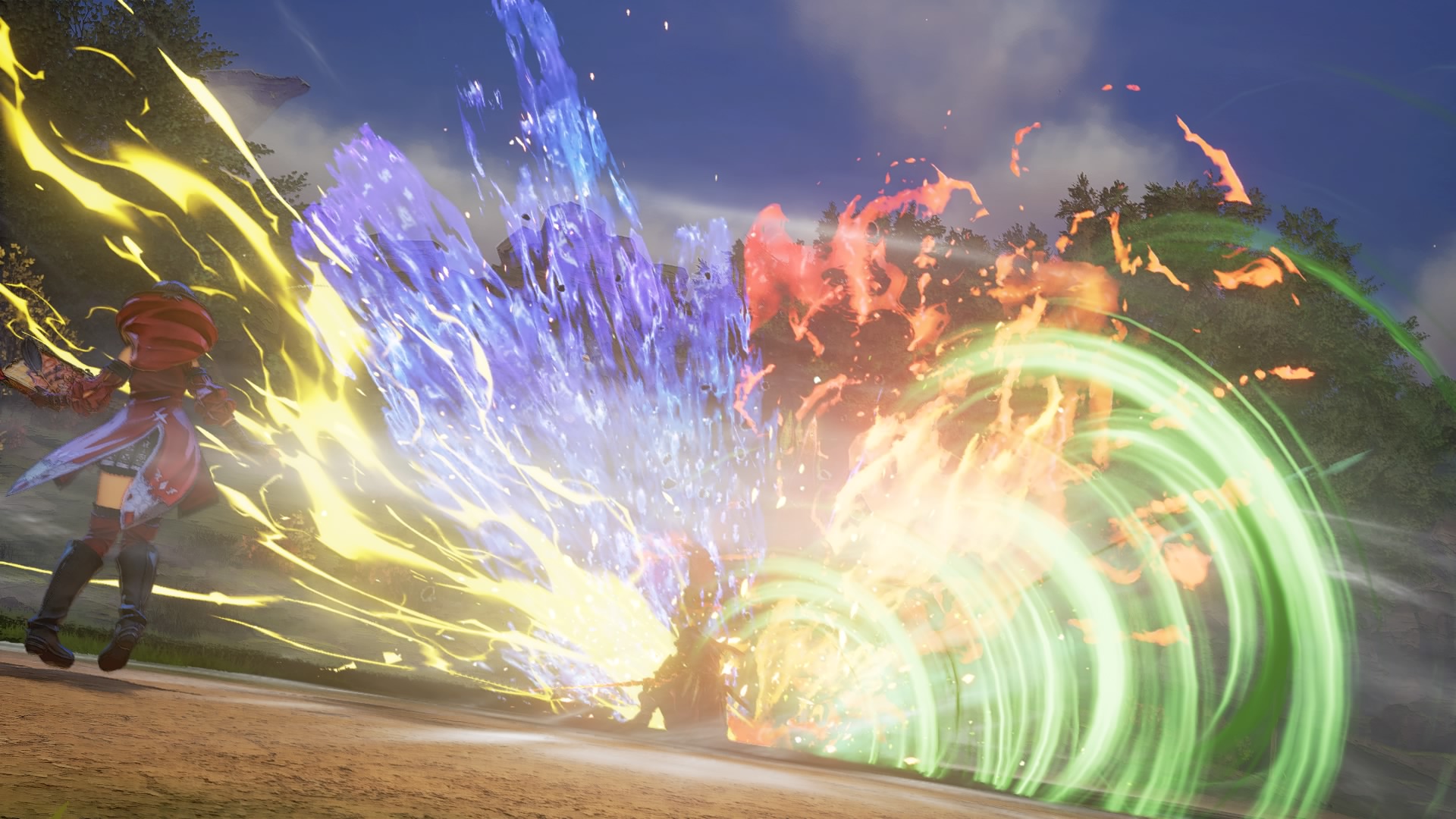
The Supreme Altar Boost Strike
Combat is fast! From start to finish most battles with trash mobs took between 30 and 60 seconds. This speed was achieved in large part with the Boost Strike mechanic that required breaking enemies by stringing together consecutive hits. Once an enemy is broken two characters would team up and deal a massive amount of damage. I’m not sure how damage works here but it seems like there was some AOE element to this strike because oftentimes battles would end right then even if there were multiple enemies. Boost Strikes were also fast only taking about 5 seconds each. The screenshot above is my favorite one. They look awesome and I was playing Arise on the weakest option (PS4) of the three platforms (PS4, PS5, PC) it’s available on. Following a battle most JRPGs show the rewards (e.g. experience, skill points, gold) you get on a victory screen but Arise just dumps you right back into the overworld and shows the rewards there. It’s the first time I’ve seen this and makes the traditional victory screen look like a waste of time although there were many times I leveled up and did not know it happened.
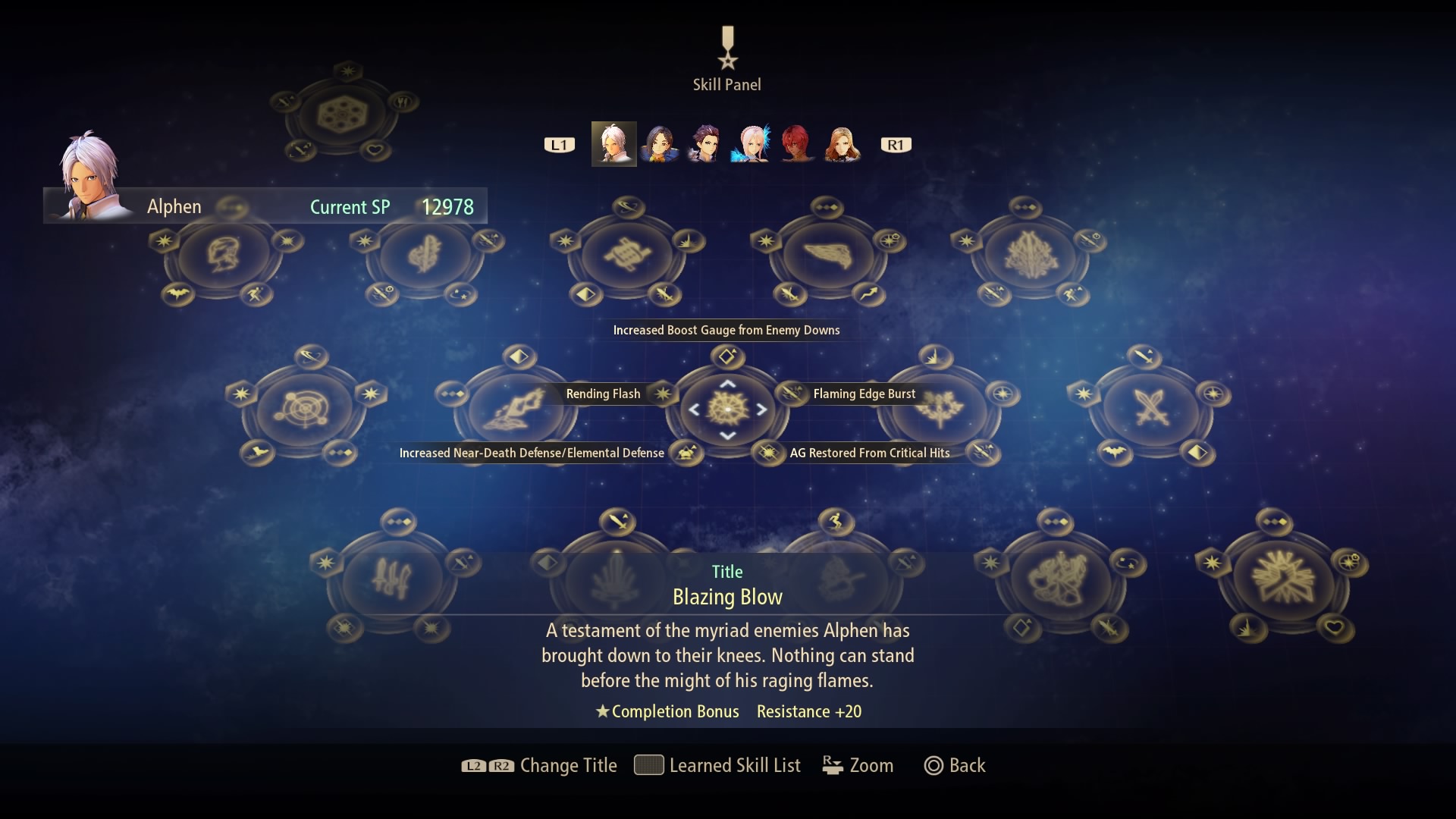
Looks somewhat like FFX's Sphere Grid but not quite
Growth and equipment mechanics are generally good too. Battles give you Skill Points (SP) which can be allocated on a Sphere Grid type structure to unlock new artes and permanent buffs (e.g. increase AG pool so you can use more artes in one go). The grid grows as you acquire more titles by either completing story events, bonding with party members, or cooking certain foods. Each panel has five thing to unlock and once you unlock them all your character gets a hefty stat boost like Attack +20. It works but there are so many things to unlock I stopped reading after a while and just marveled at the new things my party could do in battle afterwards. The equipment system is generally good. You equip a weapon, armor, and one accessory. You get weapons through a simple crafting system: find the materials and pay some gold and you’re good to go. Armor is found in chests or purchased at stores. The accessory system was a bit much though. You can find ores around the world and then use them to craft accessories. You can then use extra ore to level up your accessory and then you can have one accessory eat another accessory to take one of its abilities. I just made some accessories early game, leveled them up to max, and then never looked at the accessory crafting system again.
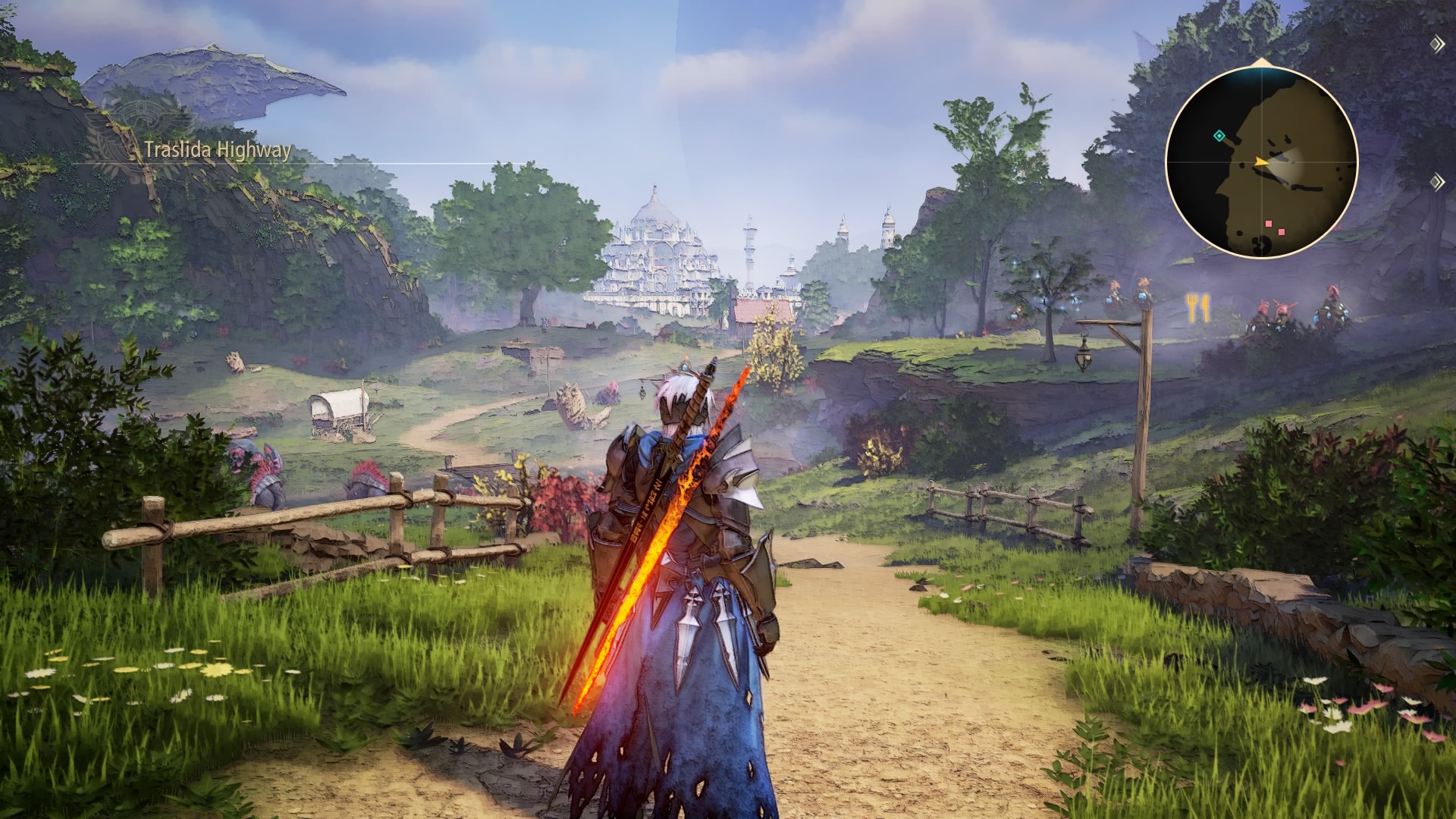
Elde Menancia
The world is beautiful and the story keeps you playing. Having the first arc on Dahna broken up into five regions each with a dominant type of astral energy makes the world varied and interesting. For example, you begin your journey in Calaglia where almost everything is on fire. Each region has its own problem that needs solving as well as a distinctive look to along with it. The story starts out strong - each region you visit has its own flavor of problems caused by the centuries-long oppression of Dahna by Rena. The second half of the game has a lot of questions to answer and it does come through in the end but a lot of this feels rushed as you get a lot of answers via a conversation with a new character introduced late in the game. It works but the pacing felt off and you are given so much new information it’s a bit hard to make sense of it all in the few huge servings you’re given. While the pacing at the end could use some tweaking unlike most Tales games that sometimes seem to drag on, Arise felt just right in terms of length.
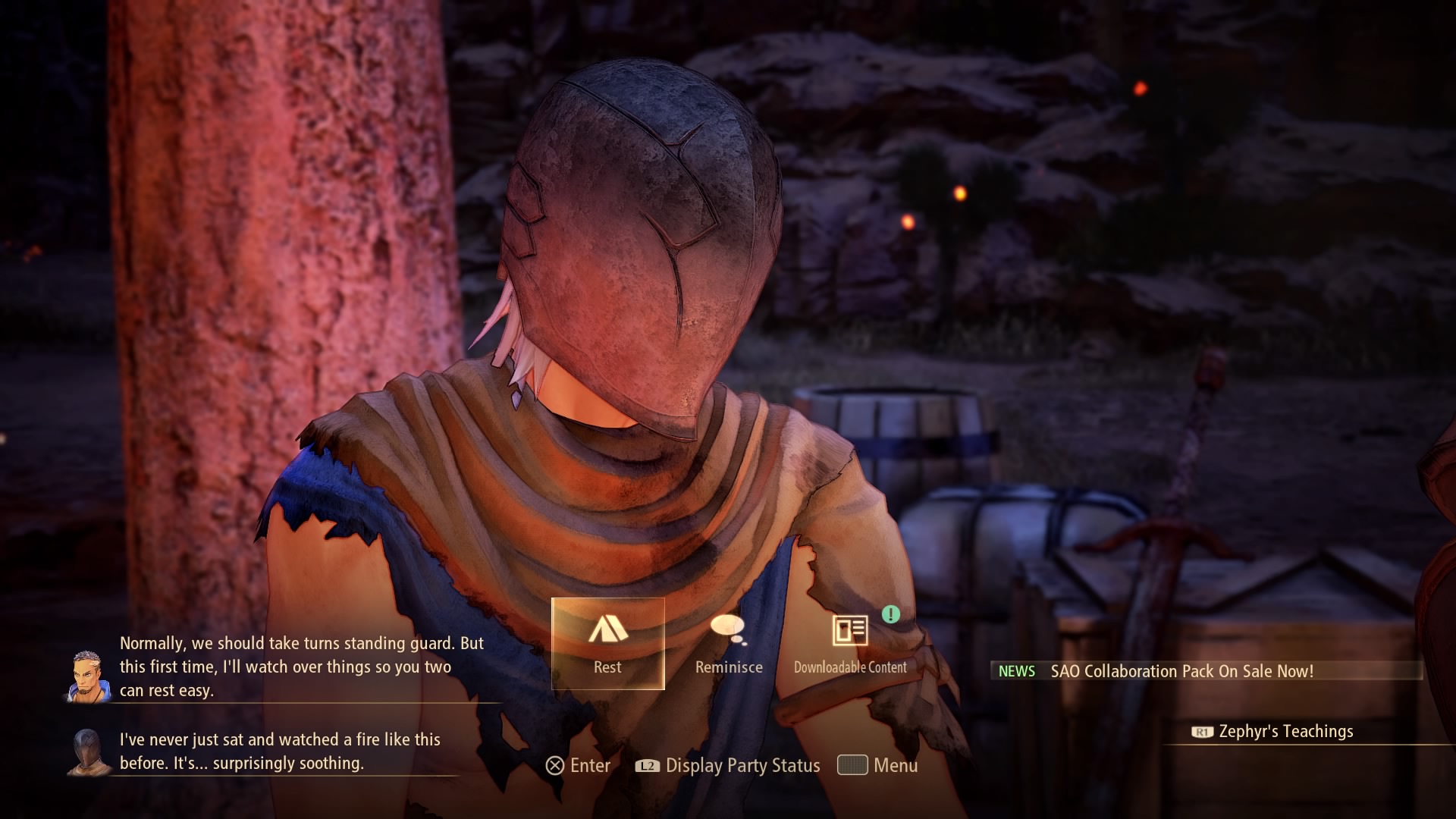
NEWS! Go buy DLC please!
The DLC for this game follows the trend but treads new, unpleasant waters. There is plenty of DLC to purchase for Arise and much of it is stuff you can find for other JRPGs: costumes for your characters, packs of items to bootstrap your party, level up boosts, and new quests to take on. My thoughts on fast grinding have evolved since I first touched on them in 2013 but as a parent the option to level up more quickly is much more appealing now; time is limited these days so having something to help cut down on the grinding is helpful. For what it’s worth, Arise does allow you to set the difficulty to Very Easy which makes everything a cakewalk without grinding and without spending money. Arise treads new waters by advertising DLC on its title screen and when your party sets up camp. The latter feels particularly invasive and pretty annoying given I found no way to turn them off without disconnecting my PS4 from the Internet.

Tales of Star Ocean?
Overall, Arise is a fantastic game. It’s approachable enough I’d even recommend it as a good entry JRPG for those who want to check out the genre without going full JRPG. For what I would like to see next for Tales: even though the recently revealed Star Ocean The Divine Force looks like a step in the right direction, the Star Ocean series has not seen a high since the Second Story which was released in 1998! Seeing our party in Arise ride a starship to reach Rena got me hankering for a Tales game that does justice to the vision Star Ocean set out to reach but has failed to in its more recent entries. This would be a departure from the standard, more terrestrial, Tales formula but could open up exciting new stories to tell!
20 May 2021
This edition of Manager Reads covers a unique and interesting book: The Psychopath Factory: How Capitalism Organizes Empathy by Tristam Adams.
Who recommended the book? A member of Twitch’s Leadership Book Club recently suggested this book for our next book. On the surface this book was different enough from all the other books we have covered that folks rallied around it.
Judge the book by its cover, font, page quality? Psychopath Factory’s cover features an image of a person that then has another picture of a person overlaid on top that then has smaller, collage-style pieces of the human face on top of that. This likely alludes to the author’s argument that we are all potentially psychopaths and are acting the part to help keep the system running smoothly. Overall the cover is cool but it is triggering that this images-on-image-on-image for some reason is not flush with the bottom of the cover. I’m unsure if my copy was just sitting in the Amazon warehouse for a while but inside the pages have a slight yellow tinge to them. Color aside the pages feel thick but you can sometimes see the text on the opposite side.
Thoughts on the book and the big take-aways? Adams makes an interesting argument that I don’t agree with. Adams argues that capitalism is not cold and inhuman. Rather, capitalism leverages and uses empathy to keep workers engaged and productive. If you’re empathetic at work, you’re a total tool and doing so in the service of capitalism. Even psychopaths, who lack empathy, have to put on a performance of being empathetic to best achieve results. In the end it’s impossible to tell who is truly empathetic (if this is even possible) and who is just engaging in performative empathy. Where Adams’ argument really jumps the shark in my book is when he closes arguing that we all should be “moral psychopaths” and not show empathy because that is the only way to subvert capitalism. I disagree with Adams because removing empathy from the equation would result in more, not less, abuses by capitalist systems.
Favorite quote from the book? “Modern work requires a convincing performance of empathy.”
Elevator pitch for suggesting (or not suggesting) the book? It’s a short read presenting an interesting argument but ultimately not worth your time.
Notes in Evernote? Buy this book and support capitalism, or read my notes on 🐘!
Most of the world’s wisdom is written down in its best books. Manager Reads is a series covering books on management and leadership, focusing on books that can improve your own leadership with the wisdom of others. Enjoyed this post and want to see more? Check out more at Manager Reads.
14 May 2021
My journey to combat the planned obsolescence of my 2008 Mac Pro might have finally hit a wall. But before we cover the bad news let’s talk good news!
Up until recently my boot drive was a Crucial M4 connected over SATA. Occasionally my computer would slow down and hang for several seconds at a time. SSDs are fast but they have gotten faster since 2013 when the M4 debuted. I figured a 2013 SSD must be the slowest thing in my computer so I picked up a Samsung 870 EVO. According to UserBenchmark I should expect a 77% performance increase going from the M4 to the 870 EVO! To ensure I was not losing any of those gains over SATA I picked up an OWC Acelsior S which plugs into a PCE slot and can provide double the bandwidth compared to SATA. So did it work?
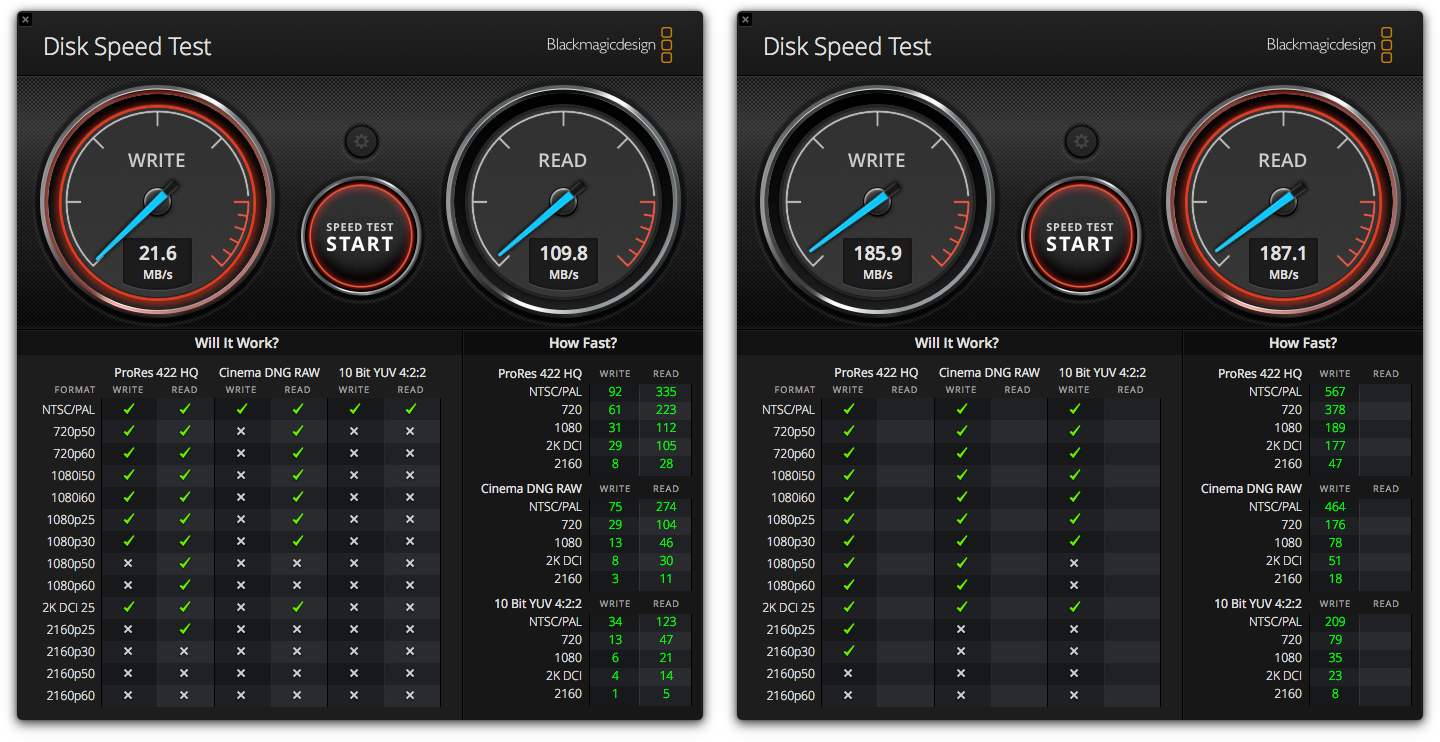
Crucial M4 / SATA (left) vs. 870 EVO / PCE (right)
I think it worked! Write speeds are 8x faster and read speeds are 1.7x faster. It may be the placebo effect but I haven’t noticed any slow downs or hangs since this upgrade. Installation of the Acelsior S was also very simple: it actually was plug-and-play.
Now the bad news. I was previously able to install High Sierra using the macOS patchers dosdude1 created and things have been working swimmingly well given I’m running High Sierra on “unsupported” hardware. Turns out the 2008 Mac Pro can also install Mojave and even Catalina! I installed Catalina but then ran into the wall: Nvidia has not released macOS drivers for any version after High Sierra and my setup sports a GTX 970. There is a workaround available that force installs the drivers on unsupported macOS versions but I ran into a lot of visual glitches on my setup. Some internet sleuthing later I found out that this workaround does not support hardware acceleration so these glitches are expected. This wall isn’t unsurmountable but it would involve buying a weaker graphics card (e.g. GTX 680 or ATI Radeon 4890) and flashing it so it works natively with macOS but at this point I’d be so off the beaten path I’m not sure Catalina would work well. You win, Tim Apple.
So long as the software I use on this machine continues to support High Sierra I’ll be able to squeeze some more years out of it. It’s impressive 13+ years later this machine works really well but the end is nigh.





